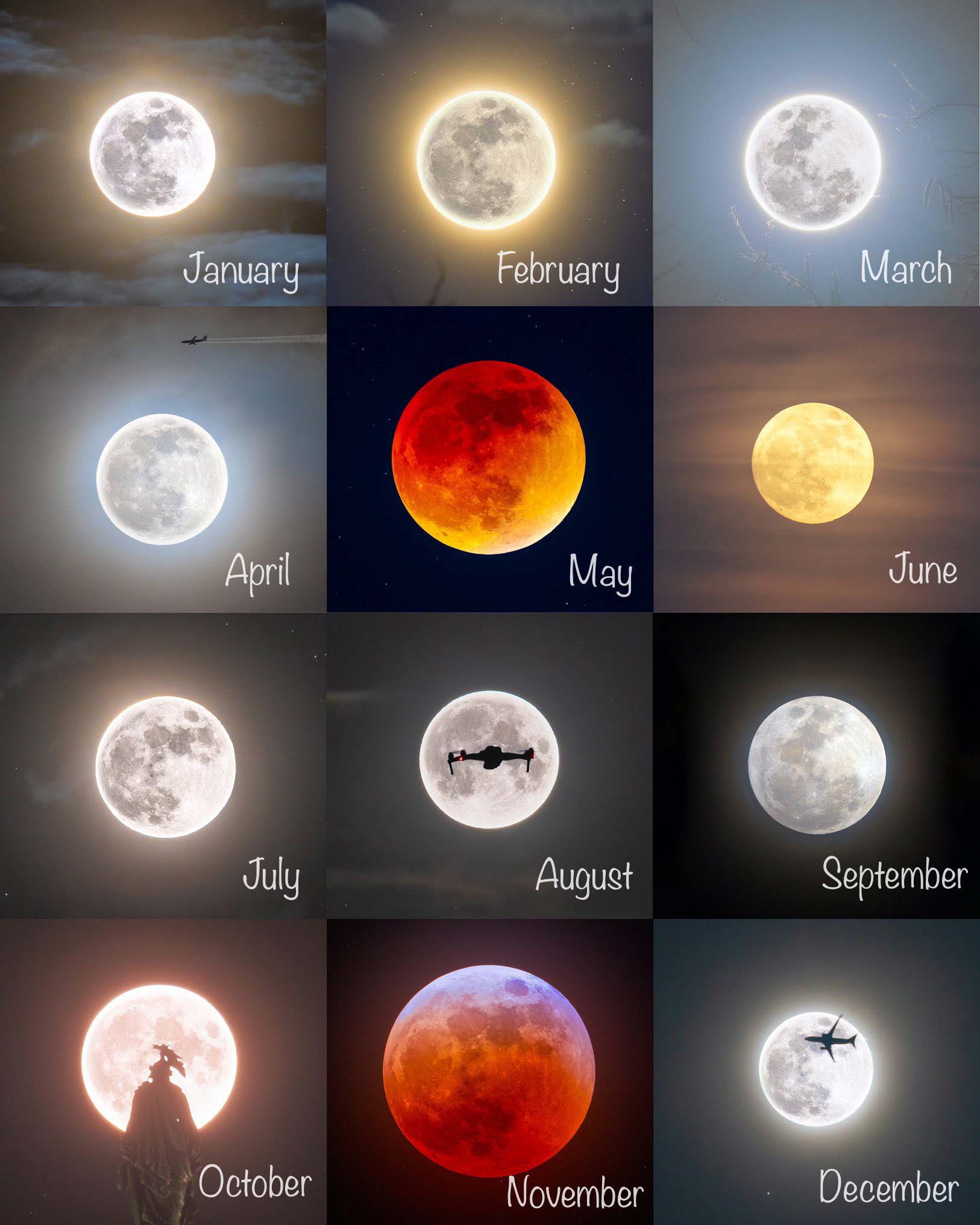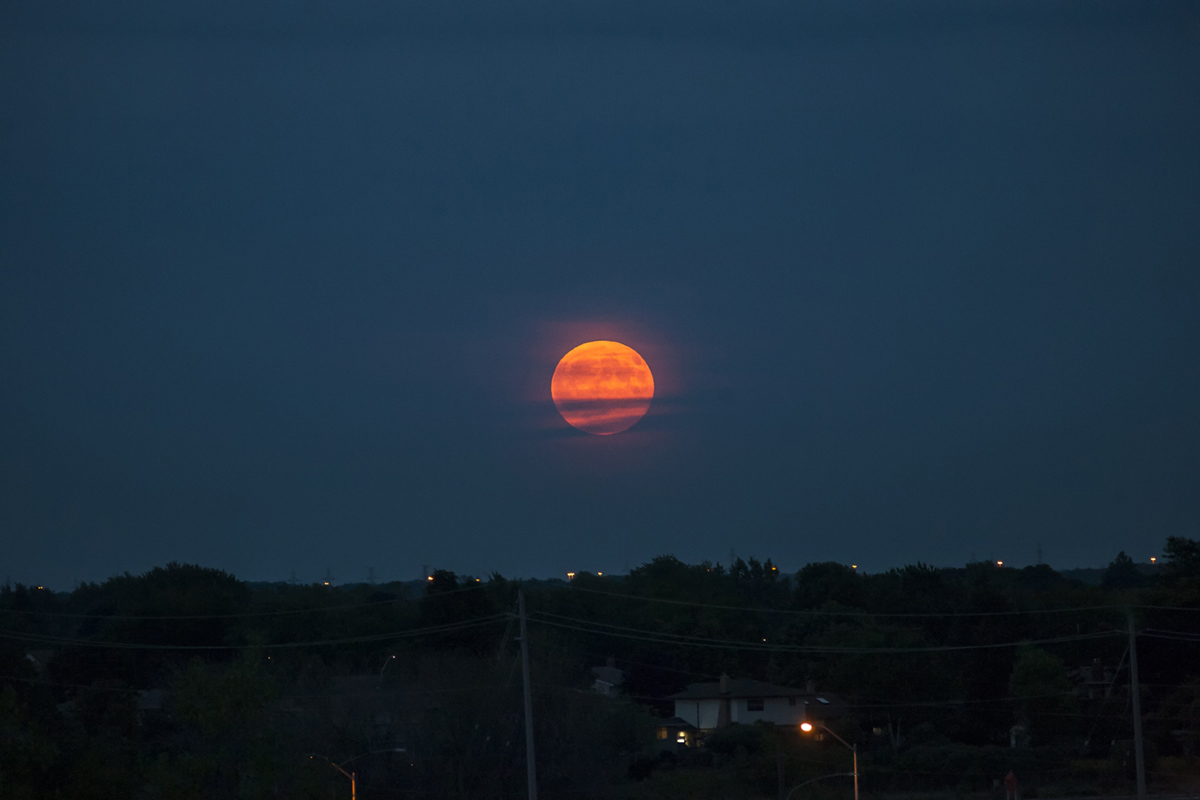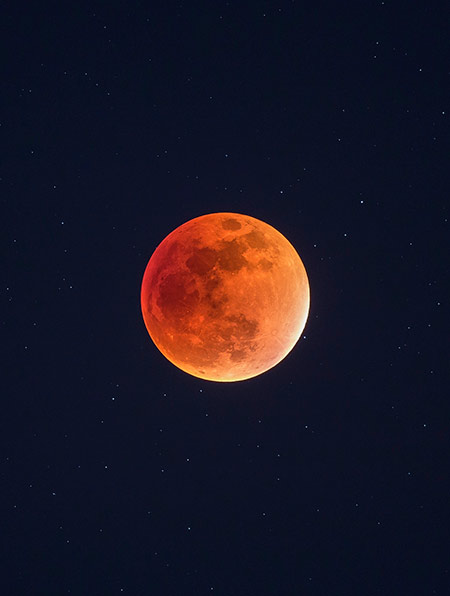What Are The Full Moon Names
Full moon names are historically linked to the changing seasons, natural phenomena, animal behavior, and religious/cultural events.
Different regions and cultures have their own names for the full moon throughout the calendar year. This reflects the diversity of human traditions and connections between people and the natural world.
Below is a table showing the full moon names according to the Farmer’s Almanac, and their corresponding months as they are today. Each one is covered in more detail below.
| Full Moon Name | Month |
|---|---|
| Wolf Moon | January |
| Snow Moon | February |
| Worm Moon | March |
| Pink Moon | April |
| Flower Moon | May |
| Strawberry Moon | June |
| Buck Moon | July |
| Sturgeon Moon | August |
| Harvest Moon | September |
| Hunter's Moon | October |
| Beaver Moon | November |
| Cold Moon | December |
Rami Ammoun (rami_astro on Twitter) captured the full moon each month of the year.
History of Full Moon Names
These names were historically used as a way to mark the passage of time, understand the changing of seasons, and adapt to the natural world.
Full moon names have been known to originate from:
- Indigenous Culture: Many North American indigenous tribes had names for each full moon that were tied to their seasonal activities.
- Colonial America: Early European settlers in America adopted (and sometimes changed) the full moon names from Indigenous cultures to match their own seasonal activities.
- Almanac Traditions: A way to mark the seasonal changes for people relying on the land.
- Modern Usage: Still used today in popular culture, especially by the media. It provides a modern connection to nature and astronomy.
Full Moon Names and Meanings
It’s important to note that the specific names and associations can vary between different tribes and cultures, and the same names might be used differently in various regions.
Today, these names are often used for cultural and educational purposes and have become a part of popular culture.
January: Wolf Moon
The Wolf Moon is a name given to the full moon in January, associated with the cold, snowy winters in North America.
It was named after the howling wolves that could be heard more frequently during this time of year. It was believed that wolves howled due to hunger in the winter (when food was scarce) and to establish territory.
We know now that wolves communicate for many reasons, including marking their territory, to coordinate hunting, finding pack members, and to reinforce social bonds.
Other traditional names for the January Moon emphasize the coldness of the season: Cold Moon (Cree) and Freeze Up Moon (Algonquin).
February: Snow Moon
The Snow Moon is a name given to the full moon in February, associated with heavy snowfall in many parts of North America. As winter reaches its peak in February, there is typically more snowfall during this month and any other month.
Alternative names for this month have typically been tied to animals. The Cree traditionally called this the Bald Eagle Moon or Eagle Moon. The Ojibwe and Tlingit Bear Moon, refer to the time when bear cubs are born
March: Worm Moon
The Worm Moon is associated with the month of March.
It was originally thought that the name was given to this month to signal the transition from winter to spring in North America. During this time of year, the ground starts to thaw and earthworms emerge from the soil. It was seen as a sign that spring was coming and the soil would soon be ready for planting.
However, more research revealed a visit by Captain Jonathan Carver to the Naudowessie tribe who indicated that the name Worm Moon refers to a type of worm beetle larvae that emerge from the thawing bark of trees.
Other traditional names also mark the transition from winter to spring including the Sugar Moon when the sap of the Sugar Maples starts to flow and the Sore Eyes Moon which highlights the bright sunlight that reflects off the snow in late winter.
April: Pink Moon
The Pink Moon is the name given to the full moon in the month of April, which is not actually pink in color.
It is named after the early bloom of certain springtime wildflowers – pink ground phlox or moss pink. These wildflowers are native to many areas in North America and are considered an early sign of the spring season.
The Pink Moon is associated with the arrival of spring and the blossoming of various plants and flowers, signifying a time of awakening after the winter months.
May: Flower Moon
The Flower Moon is given to the full moon in May, when flowers are in full bloom.
It marks the blossoming of various plants, flowers, and trees that create a colorful landscape during the height of spring.
It has also been known as the Budding Moon, Leaf Budding Moon (Cree), and Planting Moon (Dakota, Lakota), which all touch on the beginning of spring season.
The Flower Moon by Trevor Jones.
June: Strawberry Moon
The Strawberry Moon is the name given to the full moon in June to mark the beginning of the strawberry season and the arrival of other fruits and berries.
During this month, wild strawberries reach peak ripeness and are ready for harvest. They are typically one of the first berries to ripen and are ready to be gathered, making them an important food staple.
The name was given by the Ojibwe, Dakota, and Lakota peoples. However, the names vary throughout different cultures based on their gardening practices and localized plant growth.
July: Buck Moon
The Buck Moon is the name given to the full moon in July.
Each year, male buck deer and other members of the deer family, shed their antlers after breeding season. Each spring, as days lengthen, bucks begin to grow a new set of antlers.
During the month of July, the new antlers of male buck deer grow larger and more noticeable. This is linked to their breeding season where their antlers play a role in securing a mate and issuing dominance amongst other male deer.
August: Sturgeon Moon
The Sturgeon Moon is the name given to the full moon in August.
The name comes from a large, ancient, freshwater fish species from the Great Lakes that was frequently caught during this part of the summer.
The Sturgeon Moon by Rami Ammoun.
These fish could be found in lakes and rivers during the late summer months, marking the peak of sturgeon fishing season. They were a food staple for Indigenous people in the region.
Today, lake sturgeons are rare due to overfishing and habitat destruction, though there are still approximately 29 species worldwide.
September: Harvest Moon
The Harvest Moon is the name for the full moon in late summer, usually during the month of September. Also known as the Corn Moon, it is the nearest full moon to the autumnal equinox.
This means if October’s full moon happens to be closer to the autumnal equinox, then Septembers full moon will be known as the Corn Moon, and October’s moon will be the Harvest Moon.
It is associated with the harvest season when crops, like corn, pumpkins, and gains, are typically harvested.
Unlike other full moons, this particular moon rises at almost the same time (after/near sunset) for several nights in a row. This provided farmers with additional hours of bright moonlight that illuminated their fields to complete their harvest before fall and frost.
October: Hunter’s Moon
If the Harvest Moon happens in September, then the full moon for October is the Hunter’s Moon.
As mentioned above, the full moons in September and October are tied to an astronomical event – the autumnal equinox. This means that the full moon that happens closest to the autumnal equinox will be the Harvest Moon.
The Hunter’s Moon is the full moon that follows the Harvest Moon, which could occur in October or November.
The Hunter’s Moon is tied to the hunting season in autumn, a time when people would gather food supplies in preparation for winter. Similar to the Harvest Moon, the additional moonlight aided hunters in tracking animals and navigating through the woods.
November: Beaver Moon
The Beaver Moon is the name given to the full moon in November that signifies the preparation many animals take before the onset of winter.
During this time beavers were actively building and repairing their dams and lodges for the colder months ahead. In addition to repairing their homes, they would also increase their food stores before winter.
During the fur trade, it was also the season where beavers were captured for their thick pelts.
The Cree and Assiniboine peoples also marked this change in season with the names Frost Moon and Freezing Moon.
December: Cold Moon
The Cold Moon is the name given to the full moon in December.
Much like the name suggestions, it reflects the cold and frosty weather typical for this time of year, associated with the onset of the winter season.
Rare Full Moons
Blue Moon
We typically experience one full moon per month, for a total of 12 full moons each year. This is thanks to the moon phase cycle, which lasts approximately one month.
But if we look more closely at the duration of the moon phase cycle, there are 29.5 days between full moons, which adds up to 354 days to complete the 12 moon phase cycles.
This means that there is a 13th full moon observed within a calendar year every 2.5 years. This full moon is referred to as the Blue Moon.
As you may have guessed, this name has nothing to do with the actual color or appearance of the full moon. It simply marks an additional full moon for the year, which rarely happens.
If you’ve ever heard the phrase ‘once in a blue moon’, which refers to something that doesn’t happen very often – this is where it comes from.
Blood Moon
A Blood Moon is used to describe a total lunar eclipse when the Earth passes between the Sun and the Moon. As Earth blocks sunlight from hitting the Moon, sunlight is scattered in longer red and orange wavelengths.
These wavelengths are refracted (i.e. bent) by the Earth’s atmosphere, causing the Moon to take on a reddish appearance.
This red glow is why it is called the Blood Moon.
Blood Moon Lunar Eclipse by Trevor Jones.
Supermoon vs Micromoon
The terms ‘supermoon’ and ‘micromoon’ are used to describe the two extremes in the apparent size of the full Moon, based on its position in its elliptical orbit around Earth.
Supermoons are observed when the full moon is closest to Earth’s orbit (i.e. perigee) during its orbit around Earth. A micromoon would be observed when the full moon is further from Earth (i.e. apogee).
The phenomena of a supermoon occurs several times a year. However, not all supermoons are equally impressive; the degree of “super” depends on how close the Moon is to its perigee during a given occurrence.
During a supermoon, the moon will appear up to 14 percent larger and 30 percent brighter in the night sky than during a typical full Moon.
While they can make the Moon’s appearance more dramatic or subtle, they do not have a significant impact on Earth’s tides or other natural phenomena.
You will often hear these terms and events highlighted among the media, however, they are not considered official classifications or astronomical terms.
Observing a Full Moon
The dates of each of these full moons can be determined using any moon astronomy app. There are plenty of options that will provide the date and time of the full moon through the calendar year, along with the other moon phases.

The best part about observing a full moon is that it can be viewed with the naked eye. You can use binoculars or a camera and lens/small telescope if you want to increase the level of detail.
Take your observing session to the next level by trying to locate different valleys and craters on the moon. You can download lunar map resources from NASA.

Photographing the Full Moon
A DSLR camera gives you complete manual control over the camera and lens settings for moon photography.
This allows you to make small changes to exposure length, ISO, f-ratio, and much more. All of these settings are useful when photographing an object as bright as the Moon.
The Moon is extremely bright compared to the night sky behind it. This makes properly exposing an image of the Moon difficult to do without the right camera settings.
The following settings are a general starting point using an entry-level DSLR camera and kit lens (18-55mm F/5.6). you will want to make adjustments depending on the brightness of the moon and your camera and lens combination.
- Focal Length: 18mm
- Lens Aperture: F/5.6
- Mode: Manual
- File Type: RAW
- White Balance: Daytime / Auto
- Exposure: 1/400
- ISO: 200
For more details on photographing the moon, be sure to visit our page on Moon Photography Tips.
Related Content
- Deep-Sky Astrophotography During a Full Moon
- How the Moon Affects the Tides
- Are the Sun and Moon the Same Size?





